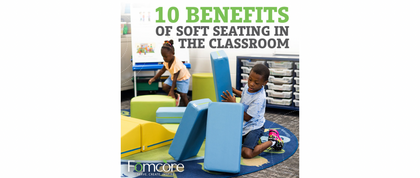
1. FLEXIBILITY IN LEARNING STYLES
Soft seating allows for various seating arrangements, catering to different learning styles and preferences, promoting a more inclusive and adaptable classroom environment.
2. PROMOTES COLLABORATION
Comfortable seating encourages students to collaborate and work together, fostering a sense of community and teamwork within the classroom.
3. SUPPORTS STUDENT WELL-BEING
Soft seating promotes a sense of well-being by reducing stress and creating a more inviting space, contributing to a positive mental and emotional learning experience.
4. ADAPTABLE LEARNING SPACES
Soft seating is versatile and can be easily rearranged to accommodate various teaching methods, group sizes, or different activities, making classrooms more adaptable.
5. ENHANCES CREATIVITY
Comfortable seating arrangements can inspire creativity by providing students with a more relaxed and open environment, encouraging them to think outside the box.
6. ENCOURAGES SOCIAL INTERACTION
Soft seating facilitates casual conversations and social interactions among students, helping to build stronger peer relationships and a sense of belonging.
7. IMPROVES CONCENTRATION
A comfortable environment can positively impact students' concentration levels, reducing distractions and promoting a more focused learning experience.
8. COMFORTABLE LEARNING ENVIRONMENT
Soft seating enhances comfort, creating a more relaxed and enjoyable atmosphere for students, which can positively impact their focus and engagement.
9. ADDRESSES DIVERSE STUDENT NEEDS
Soft seating can cater to diverse physical needs, accommodating students with different comfort preferences, postures, and sensory sensitivities.
10. MODERNIZING LEARNING SPACES
Incorporating soft seating aligns with modern educational trends, creating contemporary learning environments that reflect the evolving nature of education and better prepare students for future workspaces.